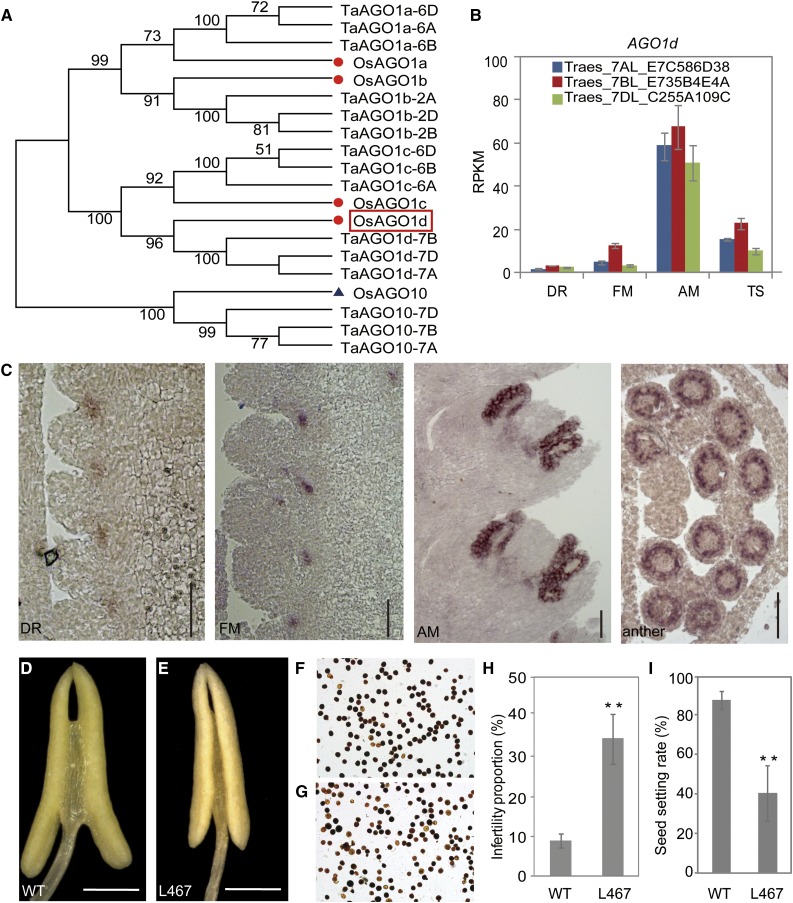Figure 7.
Functional characterization of the wheat AGO1d gene in anther and pollen development. A, A neighbor-joining tree of wheat and rice AGO1 homologs using AGO10 homologs as an outgroup. Red dots indicate rice AGO1a–d proteins, and the protein in red box is the rice AGO1d. B, Expression patterns of wheat AGO1d homeologs during early inflorescence development. C, In situ hybridization of homologs of AGO1d during the DR, FM, late AM (spike at 1 cm long) stages and anther transverse sections (spike at 2 cm long) in common wheat cv Chinese Spring. Bars, 100 µm. D to E, Anther of wild-type (cv Kronos (D) and the EMS mutant line L467 (E) of tetraploid durum wheat plants. L467 contains a premature stop codon at the predominantly expressed AGO1d B homeolog (see Supplemental Fig. S8 for more information). Bars, 500 µm. F and G, Pollen grains of wild-type (F) and L467 (G) tetraploid wheat lines stained by I2-KI. H, Infertility rates in the wild-type and mutant lines. At least 400 pollen grains were counted. Error bars represent sd (**P < 0.01, Student’s t test). I, Seed setting rates of the wild-type and L467 lines. Error bars represent sd (n = 17; **P < 0.01, Student’s t test).

